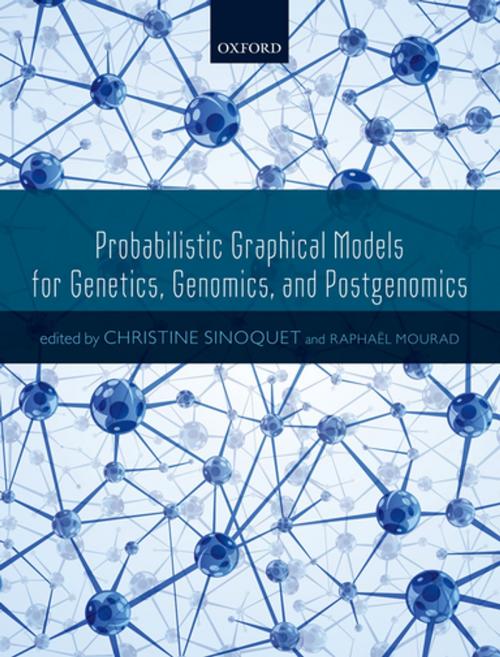Probabilistic Graphical Models for Genetics, Genomics, and Postgenomics
Nonfiction, Science & Nature, Science, Biological Sciences, Genetics, Mathematics| Author: | ISBN: | 9780191019203 | |
| Publisher: | OUP Oxford | Publication: | September 18, 2014 |
| Imprint: | OUP Oxford | Language: | English |
| Author: | |
| ISBN: | 9780191019203 |
| Publisher: | OUP Oxford |
| Publication: | September 18, 2014 |
| Imprint: | OUP Oxford |
| Language: | English |
Nowadays bioinformaticians and geneticists are faced with myriad high-throughput data usually presenting the characteristics of uncertainty, high dimensionality and large complexity. These data will only allow insights into this wealth of so-called 'omics' data if represented by flexible and scalable models, prior to any further analysis. At the interface between statistics and machine learning, probabilistic graphical models (PGMs) represent a powerful formalism to discover complex networks of relations. These models are also amenable to incorporating a priori biological information. Network reconstruction from gene expression data represents perhaps the most emblematic area of research where PGMs have been successfully applied. However these models have also created renewed interest in genetics in the broad sense, in particular regarding association genetics, causality discovery, prediction of outcomes, detection of copy number variations, and epigenetics. This book provides an overview of the applications of PGMs to genetics, genomics and postgenomics to meet this increased interest. A salient feature of bioinformatics, interdisciplinarity, reaches its limit when an intricate cooperation between domain specialists is requested. Currently, few people are specialists in the design of advanced methods using probabilistic graphical models for postgenomics or genetics. This book deciphers such models so that their perceived difficulty no longer hinders their use and focuses on fifteen illustrations showing the mechanisms behind the models. Probabilistic Graphical Models for Genetics, Genomics and Postgenomics covers six main themes: (1) Gene network inference (2) Causality discovery (3) Association genetics (4) Epigenetics (5) Detection of copy number variations (6) Prediction of outcomes from high-dimensional genomic data. Written by leading international experts, this is a collection of the most advanced work at the crossroads of probabilistic graphical models and genetics, genomics, and postgenomics. The self-contained chapters provide an enlightened account of the pros and cons of applying these powerful techniques.
Nowadays bioinformaticians and geneticists are faced with myriad high-throughput data usually presenting the characteristics of uncertainty, high dimensionality and large complexity. These data will only allow insights into this wealth of so-called 'omics' data if represented by flexible and scalable models, prior to any further analysis. At the interface between statistics and machine learning, probabilistic graphical models (PGMs) represent a powerful formalism to discover complex networks of relations. These models are also amenable to incorporating a priori biological information. Network reconstruction from gene expression data represents perhaps the most emblematic area of research where PGMs have been successfully applied. However these models have also created renewed interest in genetics in the broad sense, in particular regarding association genetics, causality discovery, prediction of outcomes, detection of copy number variations, and epigenetics. This book provides an overview of the applications of PGMs to genetics, genomics and postgenomics to meet this increased interest. A salient feature of bioinformatics, interdisciplinarity, reaches its limit when an intricate cooperation between domain specialists is requested. Currently, few people are specialists in the design of advanced methods using probabilistic graphical models for postgenomics or genetics. This book deciphers such models so that their perceived difficulty no longer hinders their use and focuses on fifteen illustrations showing the mechanisms behind the models. Probabilistic Graphical Models for Genetics, Genomics and Postgenomics covers six main themes: (1) Gene network inference (2) Causality discovery (3) Association genetics (4) Epigenetics (5) Detection of copy number variations (6) Prediction of outcomes from high-dimensional genomic data. Written by leading international experts, this is a collection of the most advanced work at the crossroads of probabilistic graphical models and genetics, genomics, and postgenomics. The self-contained chapters provide an enlightened account of the pros and cons of applying these powerful techniques.















